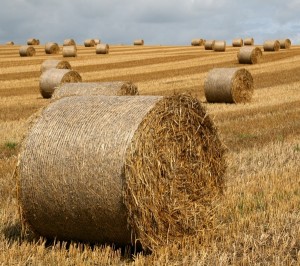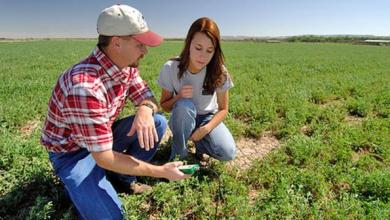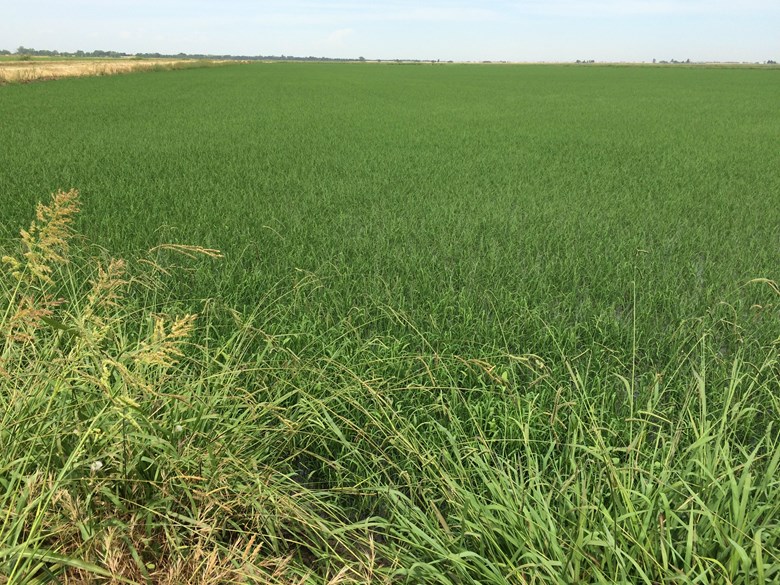As communities across the Western United States struggle with one of the worst droughts in over a century, President Obama and his Administration are committed to doing everything they can to help the farmers, ranchers, small businesses, and communities facing the severe impacts.
As part of that commitment, the Administration has announced new actions and investments of more than $110 million to support workers, farmers and rural communities suffering from drought and to combat wildfires. The new funding builds on the more than $190 million that agencies across the Federal Government have invested to support drought-stricken communities so far this year. In addition, the United States Department of Agriculture is projecting that they will provide at least $1.2 billion this year in assistance to livestock producers facing grazing losses as a result of the drought across the West.
Currently, 35 percent of the West is facing severe to exceptional drought. In California, the mountain snowpack that supplies most of the water during the summer months is only a trace above zero. In addition to targeting funding and resources to those most impacted, for more than a year the Administration has been doing everything it can to support communities facing drought. That includes coordinating in real time with state and local officials, reducing Federal water use, and identifying the tools and actions needed to enhance community drought planning and water resource management through the National Drought Resilience Partnership.
New Actions and Investments to Respond to Drought:
Drought threatens multiple sectors of the economy and leads to increased risks to communities on many fronts. That’s why the Administration’s efforts will help to address the drought challenge from all angles, from employing workers and providing food assistance to making long-term investments to support water efficiency and conservation and addressing wildfire.
Assisting dislocated workers:
All over the West, continued drought is leading to job losses, particularly in the agricultural sector. In California alone, a recent University of California Davis study estimates 18,000 lost jobs because of drought. These losses leave working families struggling to make ends meet, and today the Department of Labor is announcing new plans to assist them, including:
The Department of Labor will award as much as $18 million to the State of California to provide jobs for workers dislocated by the drought. Starting in July, this National Dislocated Worker Grant will employ up to 1,000 workers for up to 6 months with public and nonprofit agencies working to build drought resilience, reduce wildfire risk, and improve water efficiency. The grant, made possible by the Workforce Innovation and Opportunity Act, will focus on the areas facing the most severe impacts in California. Other states that have received a drought emergency declaration and can document drought-impacted job losses will have the option to apply for similar Dislocated Worker Grants. The program in California will also support youth in drought-impacted households as well as the long-term unemployed.
Supporting American farmers and ranchers and the families who depend on them:
American farmers supply food for the entire Nation, and drought puts their livelihoods – and our food security – at risk. The USDA is announcing ongoing support for farmers, livestock producers, and struggling families, including:
Through the Risk Management Agency, USDA is expanding a program that allows farmers to exclude their exceptionally bad production years, which are often the result of drought, from the calculation of their crop insurance coverage. This ensures that a bad year or two caused by drought does not significantly reduce their crop insurance coverage. This action will provide an estimated $30 million in additional relief to farmers in Fiscal Year 2016, and $42 million in Fiscal Year 2017.
Through its Livestock Forage Program, USDA projects it will provide at least $1.2 billion in assistance to livestock producers in fiscal year 2015. The program, made possible by the 2014 Farm Bill, provides compensation to farmers and ranchers who suffer grazing losses because of drought or fire.
To support families hardest hit by the drought, the USDA Food and Nutrition Service has committed to working with faith-based and community groups to help them establish at least 760 summer food service meal sites in drought-impacted Central Valley communities in 2015. Last year, 725 sites helped provide meals to kids throughout the region. When school is in session, low-income kids can receive breakfast and lunch at school at little or no cost to their families. The summer food service program ensures that every child continues to have access to nutritious meals when school is not in session.
Improving water systems and water efficiency:
As drought conditions persist throughout the West, every drop of water counts. The Administration has supported efforts to improve vital water infrastructure and increase efficiency so communities get the most out of the water they have. Today, the Administration is announcing new investments to address critical water needs, from promoting water conservation to improving water systems, including:
The Bureau of Reclamation is announcing $6.5 million in fiscal year 2015 to support water management improvement projects over the next two years. The Federal grants will be combined with local cost-share contributions, making a total of nearly $30 million available to help alleviate the impacts of the drought on communities and agriculture.
To support water utilities and households coping with drought in California, USDA Rural Development will provide at least $7 million to address the drought-related needs of water utilities and households.
Protecting our communities from wildfire:
A changing climate heightens the risk of wildfire and makes our communities, infrastructure, and natural resources vulnerable to fire. Already, areas across the West are facing longer wildfire seasons and more severe fire activity. That’s why, in his Fiscal Year 2016 Budget, President Obama has proposed a common-sense approach that treats suppression of the most severe fire activity the same as we treat other natural disasters. The funding fix, modeled on congressional proposals with broad bipartisan support, would provide funding certainty in future years for firefighting costs and allow us to invest in programs that more effectively promote fire risk reduction and long-term forest and rangeland health and resilience. The Administration has mobilized resources to fight fires, including more large air tankers to support the firefighters on the ground, as they work to suppress the fires.
And the Administration is taking new steps to build long-term resilience to wildfire, including:
The Department of the Interior is announcing $10 million for 10 Wildland Fire Resilient Landscapes Projects. Currently in its first year of funding from Congress, selected projects emphasize collaborative landscape-scale planning across multiple jurisdictions in order to lessen the risk from catastrophic wildfire and enhance the protection of critical natural resources and watersheds. The President’s FY 2016 Budget proposes $30 million for the program to provide multi-year support for landscape-scale projects and expand the program to new partnerships.









